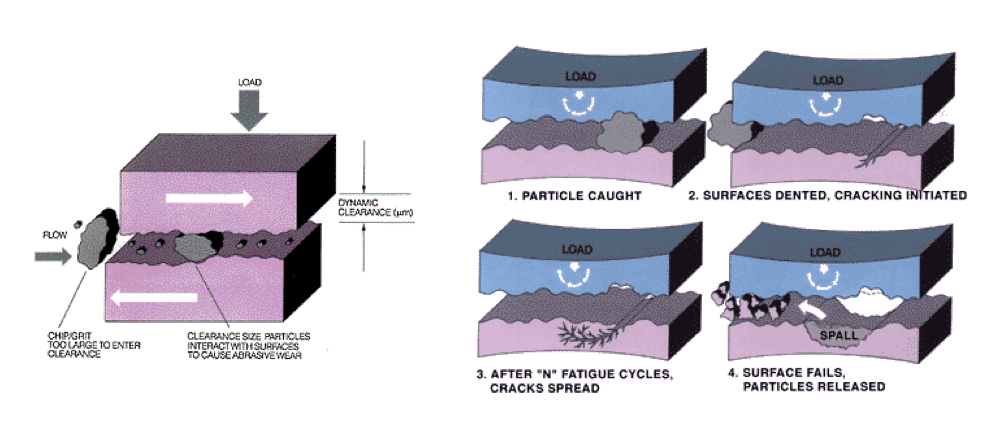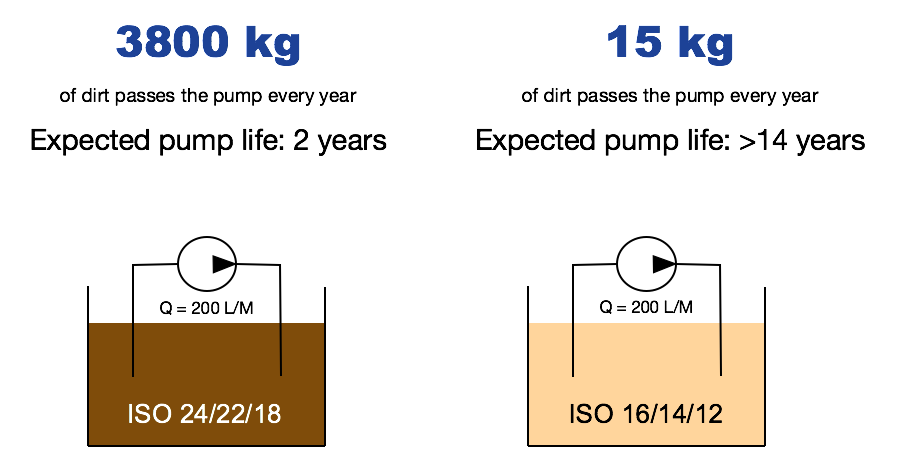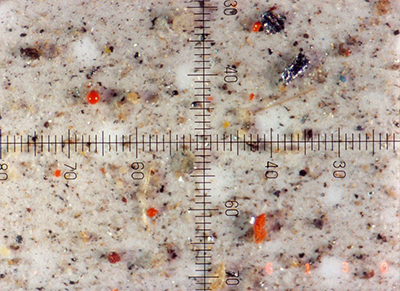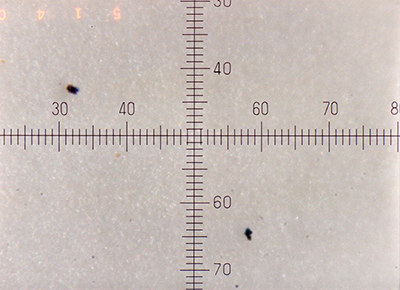Solid particles multiply continuously in hydraulic systems
Solid particles flow through the hydraulic system under high pressure and at high speed and sandblast its components (pumps, valves, seals and cylinders).

Particularly the tiniest particles which are either equal in size or smaller than the critical dynamic clearances (< 5 µ) are the most dangerous . They have the ability to overcome the tightest tolerances and cause damage to one or both surfaces.
Control pumps and servo-valves have critical clearances of 1-10µ and, as a result, are highly sensitive to fine dirt particles. It is, therefore, not surprising that most manufacturers of this type of component state in their literature that the purity of the oil used must have a purity grade better than NAS 6 or ISO 15/12, in order to avoid downtime and thus ensure a long life span.

Did you know that a pump with a flow rate of 200 l/min. and contaminated oil (NAS 12 or ISO 21/18) has to pump more than 3,000 kg of dirt particles per annum ? This same pump with a clean oil (NAS 4 or ISO 12/9) only needs to process 15kg.
In addition, metals are highly active catalyst and accelerate the oxidation process of the oil. This oxidation process is neutralised by antioxidation additives which are present in the oil. Through a process of polymerisation they adhere to the metallic particles and thus prevent direct contact between the oil on the one hand, and the metal on the other. However, new metallic particles require constant neutralising, which means that the additives are slowly being depleted.
Small metallic particles play an important part in this process as they represent such an enormous surface area (the smaller the particles, the greater their surface per unit of volume). Consequence: the higher the pollution, the faster acid develops in the oil and the faster the oil loses all its physical and chemical properties. A change of oil is then the only solution.
Causes of servo-valve malfunctions
- Valve jet steering: bigger particles can stick within this narrow passage and cause malfunction of the valve steering.
- First stage steering: the ball needle has to steer the positioning of the first stage spool. But very small metal particles ( < 10µ ) cause wear of the ball surface. As a result the round ball becomes oval little by little, which will again result in wrong steering of the main spool.
- The edges of a servo valve’s spool have a zero-overlap. By small metallic particles these edges will wear out, resulting in fluid leakage and valve malfunction.
- In case of a high resin presence, the resins can completely stick the spool. Also metal particles can stick between the narrow tolerances and block the valve completely.


ISO 24/22/19 - NAS 12

ISO 15/12/9 - NAS 4
